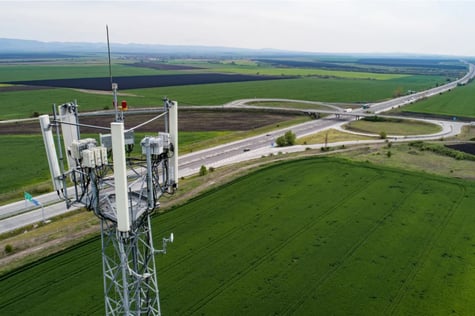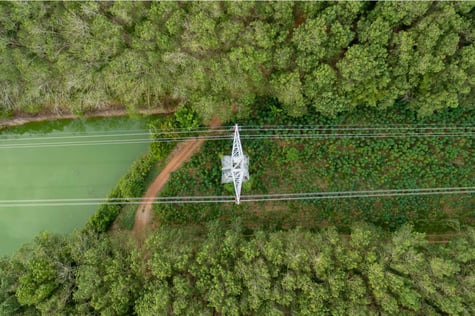Before trying to summarise everything you need to know about LTE 450, we should briefly explain why. Essentially, LTE 450 is a wireless communication network based on the 450 MHz frequency band. It offers wide reach, deep signal penetration and a secure, dependable connection. With the right preparation and approach to LTE 450, various industries can take advantage of its many capabilities.
LTE 450 supports communication functions including data, remote monitoring and more. Its low frequency (450 MHz) gives wider area coverage than higher frequencies, which makes it more economical as it requires fewer base stations. It can cover thinly distributed points of connectivity in rural areas and other remote settings which are difficult or impossible to connect via mainstream mobile networks. Its signals penetrate deeply through walls and underground. LTE 450 can be deployed and operated cost-effectively and flexibly, and its communications are fast, reliable and secure.
Increasing numbers of businesses are turning to LTE 450, and this growth is set to continue. There is a competitive edge to be gained by early adopters, while growing availability and ease of adoption are increasing the advantage for all.
Who needs to know about LTE 450?
LTE 450 provides a sound basis for critical communications, whether in a commercial context or for public services, including safety. It’s ideal for connecting consumers and business premises – such as offices and plants – in widely separated locations. Utility companies, especially, will use LTE 450 to shift data traffic away from public networks and avoid congestion. The same applies to manufacturing and engineering businesses with their IoT and M2M data.
There is great interest in applying LTE 450 to smart energy grids, to other remotely controlled infrastructures and to meter reading in particular. It enables real-time data on each consumer’s energy use and other metrics to be collected and sent for management and analysis. Huge numbers of meters and other devices can be connected – some of which were previously difficult to reach due to their depth within buildings. In smart cities, LTE 450 may have roles in controlling services like lighting, heating and waste management.
Businesses working to digitise their processes and become smarter should take note. LTE 450 can help them gain full benefit from advances like industrial IoT, Industry 4.0 and the move toward smart factories, while providing flexibility for future communication needs.
Power generation, gas, oil and mineral extraction, farming, logging, marine industries and freight distribution are just some of the sectors which will benefit.
What do the experts know about LTE 450?
Network operators and equipment vendors with specialist knowledge in this area can tell you everything you need to know about LTE 450. Much experience has already been gained. To date, more than 70 countries have allocated the LTE 450 spectrum to new purposes. In 20 of those countries there are now active LTE 450 networks.
European countries have been the earliest adopters, with the energy sector amongst the first to win LTE 450 access. In Finland, telecom company Ukkoverkot has been that country’s first provider to deploy LTE 450 as a broadband network. Despite Finland’s large area and scattered population, it has achieved 99.9% coverage.
A key challenge for the specialists is to help network operators and customers who have invested heavily in CDMA technology to migrate to LTE. Their solutions include hybrid arrangements, enabling gradual migration, and reuse of existing equipment wherever possible.
Devices specified to support the LTE 450 network frequency will be needed. As LTE 450 deployment grows, designers and suppliers of equipment and services which enhance its advantages are making further advances. Developments include new mobile phones, laptops, routers, modems, antennas and other devices optimised for LTE 450, along with modules and systems for easy implementation.
To learn more about LTE 450, download our free complete guide.




